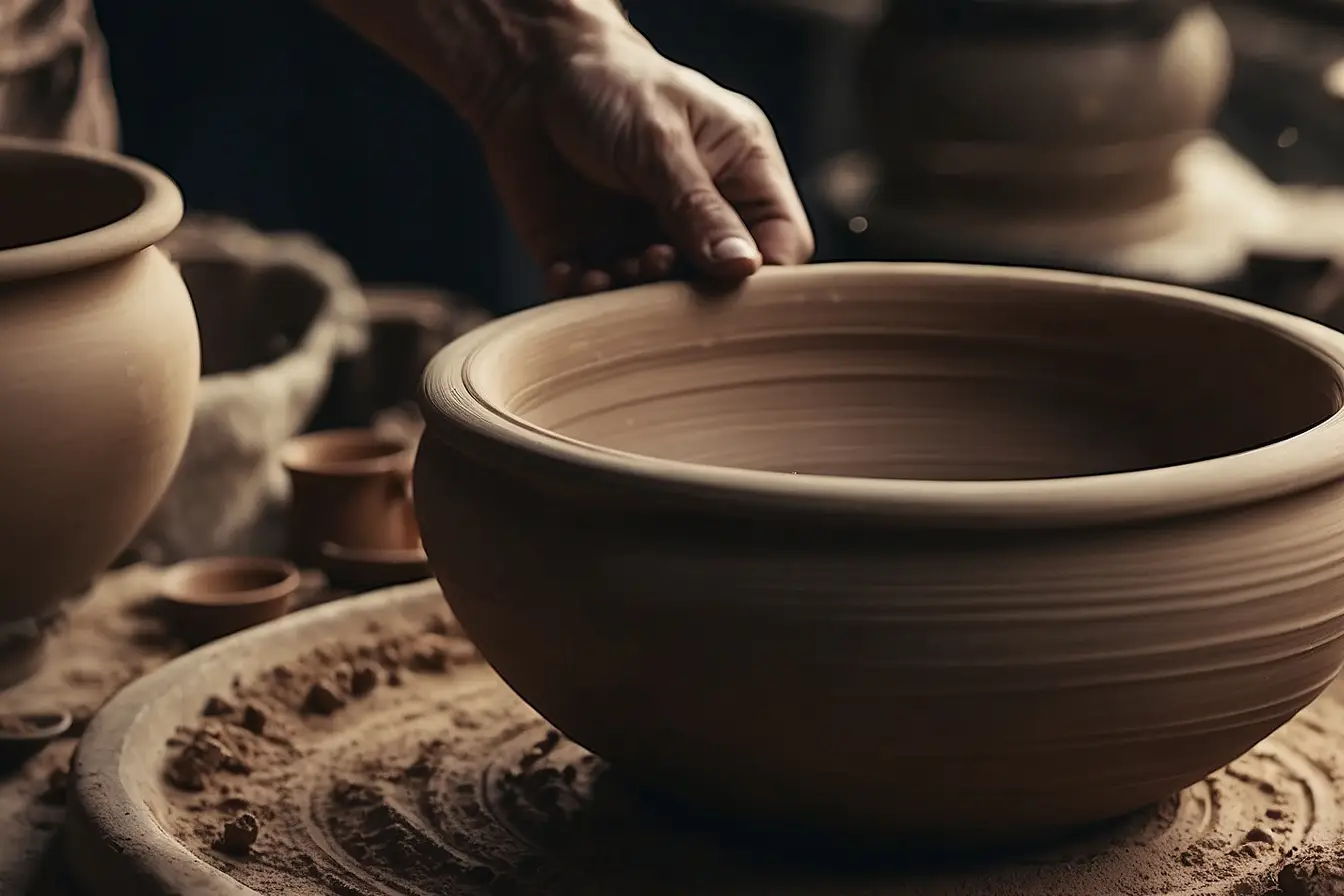It is one of the most popular crafts in history. It has been practiced since ancient times for making water jars, kitchen utensils, etc. Clay, an easily accessible material, is used in making pottery, which is then decorated with color drawings or engravings.
Process of Making Pottery:
The first step involves collecting soil from valleys. Soil is soaked in a pool of water, and then filtered in another pool for two weeks. After that, clay is taken and covered for 4-6 days, after which period it is foot-wedged to make it cohesive. Later, it is placed on the machine (the wheel) to make and shape the desired product. The shaped clay is then stacked in an oven where it is fired for hours. Upon being removed, it is left to air for a day to cool down.
A Craft Linked with Madinah:
Pottery making is a very old craft in Madinah. The jars of the companion Saad ibn Ubadah were used to fill with drinking water and offer as charity. They were noted by historians. In the past, pottery factories were centered in two areas in Madinah; there was a group in the slope of Wadi Qanat near Al-Aqoul, and another group near Wadi Buthan.
What helped pottery making in Madinah flourished is the location of the city near valleys and availability of raw materials.
Collecting Pottery Products and Training on Pottery Making:
In spite of the remarkable decline in using pottery products at present, the authorities of Madinah region have paid attention to traditional crafts, such as pottery making, and supported their owners. Official efforts include development of popular markets and stores selling such products.
The Heritage Authority has paid attention to this craft and provided training courses and workshops and organized various events that highlight pottery products inspired by the local environment. The authority has attempted to preserve the craft from extinction and to display products in popular markets and events. Thus, visitors are interested in buying such products as souvenirs from Madinah.
